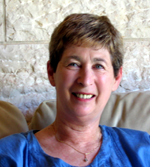By Dorothea Shefer-Vanson

MEVASSERET ZION, Israel — Despite rumors to the contrary, Israel is a normal country at least as far as retail therapy is concerned. Shopping malls are popping up with ever-increasing frequency wherever one looks. They incorporate many advantages for both vendors and shoppers, and the ambience in them varies from quiet elegance to rowdy bombardment by broadcast announcements, together with rampant crowds and over-assertive salespersons.
Said Kashua, an Israeli Arab originally from the village of Tira in Galilee and now a resident of Jerusalem, writes a weekly column in the Hebrew-language newspaper, Ha’aretz. In it he depicts life as an Arab, writer and devoted family man in Israel today. Deploying a wry sense of humour, he presents his view of the behavior of the Israeli person-in-the-street, not to mention the Israeli authorities.
One of Kashua’s columns in November described what happened when his wife told him to buy clothes for their young son for the Muslim Festival of the Sacrifice (Eid el-Adha) which celebrates Abraham’s non-sacrifice of Isaac (why don’t Jews celebrate it, I wonder).
Following his wife’s instructions, Mr. Kashua dutifully betook himself to Jerusalem’s main shopping mall in Malha, purportedly the largest in the Middle East. His first shock came when he espied the long lines of cars waiting to pass through the vehicle security check, followed by the inevitable difficulty of finding parking.
Later on there were long lines of eager customers, both Jews and Arabs, waiting to go through the personal security check, where ladies’ handbags are inspected. Once inside the mall there was an unusually large crowd of people, with equivalent queues at the tills.
In his column Mr. Kashua added a few complaints about remarks made by passing Israelis, sour looks on the faces of shop assistants and the lack of any entertainment for the children or joyful festive spirit. But he added on a happy note that he was gratified by the fact that at least for that brief period the Malha Mall was Arab.
As luck would have it, I also paid one of my rare visits to that self-same mall that week. I, too, had to park my car a long way away and walk uphill in order to get to the entrance. I, too, was surprised to see the crowds of people, and it was instantly evident to me that these were not the usual crowds. The heads of Arab women who observe the Muslim religious proprieties, including many of those who were there that day, are tightly covered with headscarves. Thus, many Arab families seemed to be intent on making their purchases that day and enjoying the experience to the best of their ability.
Unlike Mr. Kashua, I did see entertainers, using inordinately loud amplifiers and surrounded by a throng of well-behaved children at their feet. Parents, both Jews and Arabs, stood at the sides, enjoying the performance. The atmosphere was decidedly festive, and to my surprise and relief I didn’t see a single instance of ungracious or unpleasant behavior.
As I made my way through the crowds I felt that this was more than just another day at the mall. This was a day on which Arabs and Jews were living alongside one another in harmony, just as they do on the buses and Jerusalem’s recently inaugurated light railway, just as they do in Jerusalem’s modern French Hill neighbourhood, where many Arab professionals live alongside middle-class Jews, and just as they do in the hospitals and health clinics, where staff and patients are drawn from both communities. But of course, those non-events are never going to make the headlines of any newspaper.
*
Shefer-Vanson is a freelance writer and translator who lives in the Jerusalem suburb of Mevasseret Zion. She may be contacted at dorothea.shefer@sdjewishworld.com This article initially appeared in the AJR Journal, published by the Association of Jewish Refugees in the United Kingdom.